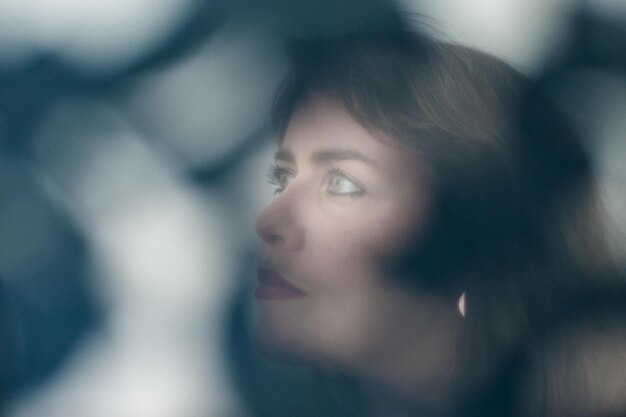What a World with Cataracts Looks Like: A Comprehensive Guide
Imagine living in a world where everything seems clouded, much like looking through a foggy window. This is often what a person with cataracts experiences. But what exactly do they see, and how can understanding this enhance both personal empathy and practical knowledge? Let’s explore this topic comprehensively, delving into everything from symptoms and causes to treatment options and everyday coping strategies.
Understanding Cataracts: Shedding Light on a Common Eye Condition
Cataracts are a prevalent eye condition where the lens of the eye becomes cloudy, affecting vision. Although commonly associated with aging, various factors can contribute to their development, impacting individuals of various ages.
Symptoms and Early Warning Signs
- Blurred Vision: A common symptom is vision that appears hazy, much like viewing the world through a frosted glass.
- Sensitivity to Light: Bright lights may cause discomfort or glare, making certain environments challenging.
- Dulled Colors: Colors might appear less vibrant, often causing the world to seem washed out.
- Double Vision: In some cases, cataracts can cause double vision in the affected eye.
- Night Vision Difficulties: Seeing at night can become increasingly problematic, posing risks while driving after dark.
- Frequent Prescription Changes: A need for regular updates to glasses or contact lenses can indicate the early stages of cataract formation.
Potential Causes of Cataracts
While aging is a significant factor, other elements can cause or accelerate cataract development:
- Genetic Predisposition: A family history can increase susceptibility.
- Medical Conditions: Diabetes and other health issues can contribute to cataract formation.
- Lifestyle Factors: Smoking, excessive alcohol use, and prolonged sun exposure are known risk factors.
- Injury or Trauma: Past eye injuries can lead to cataracts.
- Medications: Long-term use of certain medications, like steroids, can increase cataract risks.
Experiencing the World Through a Haze: What Do People with Cataracts See?
Understanding the visual experience of someone with cataracts can foster empathy and a better comprehension of the challenges they face in everyday life.
Visual Impacts and Daily Life Challenges
- Reading and Screen Use: Text can appear blurry or distorted, causing difficulty in activities such as reading books or using digital devices.
- Driving: Glare from headlights at night and reduced clarity can pose significant safety hazards.
- Social Interactions: Recognizing faces and expressions becomes challenging, impacting social engagements.
- Workplace Productivity: Tasks that require sharp vision might suffer, affecting professional performance.
Varied Perceptions: One Size Doesn’t Fit All
People experience cataracts differently depending on factors like development stage, cataract type, and overall eye health. It's important to recognize that:
- Not All Cataracts Progress the Same: While some might experience slow progression, others may notice rapid changes.
- Subjective Nature of Visual Impairment: The degree of vision impairment varies, making personalized support crucial.
Treatment Options: Navigating the Path to Clearer Vision
Understanding treatment options is vital for those seeking to improve their visual quality of life. Treatment plans are often tailored to the individual's unique circumstances.
Non-Surgical Approaches
- Vision Aids: Adjusting prescription glasses and enhanced lighting can provide temporary relief.
- Lifestyle Adjustments: Wearing sunglasses and hats can mitigate glare and protect the eyes from UV rays.
Surgical Solutions
Cataract surgery is one of the most common and effective treatments, involving the removal of the cloudy lens and replacement with a clear artificial one.
- Minimal Recovery Time: Most patients experience improved vision shortly after the procedure.
- High Success Rate: The majority of individuals report satisfaction with postoperative results.
Everyday Coping Strategies for Individuals with Cataracts
Whether awaiting surgery or managing symptoms, several strategies can make day-to-day life more manageable.
Practical Tips and Techniques
- Enhanced Lighting: Use brighter, well-placed lighting in homes and workplaces.
- High-Contrast Text: Choose reading materials with bold, clear print.
- Regular Eye Exams: Frequent check-ups ensure timely adjustments to vision care plans.
- Assistive Technology: Consider using audio books or text-to-speech software for reading.
Support Systems and Community Resources
- Support Groups: Engaging with others who share similar experiences can provide emotional and practical support.
- Vision Rehabilitation Services: These resources can teach adaptive skills and offer guidance on using assistive devices effectively.
Debunking Common Myths About Cataracts
Understanding and addressing misconceptions can empower individuals to make informed decisions regarding their eye health.
Myth: Cataracts only affect the elderly.
Reality: While more common in older adults, cataracts can develop at any age due to various factors.Myth: Surgery is the only option once diagnosed.
Reality: Many manage with vision aids and lifestyle changes until surgery becomes necessary.Myth: Cataracts will inevitably lead to blindness.
Reality: With timely medical intervention, most individuals regain significantly improved vision.
Summary: Key Takeaways for Navigating Life with Cataracts
Here’s a quick recap of practical tips and insights about cataracts:
- 📝 Stay Informed: Knowing the symptoms and risk factors can prompt early medical consultation.
- 🔍 Regular Checkups: Comprehensive eye exams are crucial for monitoring progress and planning treatment.
- 🛠️ Utilize Tools: Make use of vision aids, adaptive technology, and enhanced lighting for daily tasks.
- 🗣️ Seek Support: Connect with community resources and peer support for guidance and encouragement.
- 🔄 Adapt as Needed: Adjust lifestyle habits to accommodate changing vision needs and reduce discomfort.
By understanding the experiences and challenges associated with cataracts, individuals can take proactive steps towards managing their vision, enhancing their quality of life, and approaching eye health with confidence and clarity.
